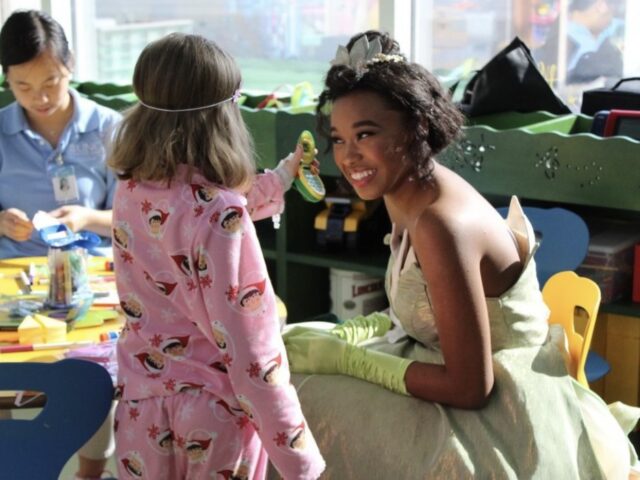By Marisa Young | Staff Writer
The phenomenon of life flashing before a person’s eyes in their final moments is supported by science, according to Chicago junior and A Moment of Magic President Meg McGavic.
One study published by the Proceedings of the National Academy of Sciences backs this claim, citing recorded brain activity in a person’s dying moments.
These final, reflective moments are at the core of what A Moment of Magic exists for, McGavic said.
“We have worked with thousands of kids,” McGavic said. “And there’s a chance that of those thousands, for those who have passed away, we were in some of those final moments.”
McGavic said her passion for the national organization was ignited after hearing testimony from a mother about the positive impact AMoM had on her daughter, before she passed away due to illness.
“Our goal is to provide so much magic and joy and love,” McGavic said. “That’s why we do what we do. I’ve always been passionate about AMoM, but after that testimony I’ve been extra passionate about it because I learned about giving people good moments to look back on.”
AMoM’s mission is to “facilitate play to spark joy and foster connection” among kids with medical vulnerabilities and their families, according to Austin junior and AMoM Vice President Harper Dorris.
“Play is a really big part of the way that children communicate to us,” Dorris said. “Especially for children going through such hard things, play, laughter and joy can really help take them out of the moment of hardship that they’re in.”
In a hospital setting, play can take the form of character visits, in which AMoM members transform into Disney princesses or Marvel characters to meet and play with children.
McGavic recalled a visit she made to Houston Intelligence Hospital, during which she met a young girl eager to meet princesses after her treatment.
“We walked her to her room, me and two other princesses,” McGavic said. “There was a nurse who was bringing her machine with her. And this little girl was like, ‘I’m so happy you’re here, let’s have a tea party.’ Those extra 30 minutes where we stayed and played with her in the playroom, and walked her to her room and hung out with her, were filled with magic moments.”
In addition to visits, AMoM members also conduct Express Create Heal activities that often use accessible, fun means like art.
“Our ECH program allows us to help give these kids a toolbox of advocacy skills, coping, grief and more,” McGavic said. “It was created by medical professionals, child life specialists and mental health professionals.”
She recalls helping a young sibling of a hospitalized child cope with grief and loneliness through coloring her feelings on a gingerbread man.
“We reduce the isolation of the kids who are sick, and also their family members too; we make sure that the siblings aren’t forgotten,” McGavic said.
All AMoM members receive professional training from medical and mental health experts before making visits or conducting ECH activities, McGavic said.
“We have five different age groups that we serve from ages 2-18, and a bunch of programs that we do within that to help these kids grieve, to help them grow, to help them communicate,” McGavic said.
The Baylor AMoM chapter provides countless additional resources to support children and their families, which can be explored on their national website, Dorris said. Some examples of their outreach include fundraising, community partnerships and a child-friendly YouTube alternative featuring content created exclusively by magic makers.
“A lot of people assume that we are a princess club that goes to hospitals, but we do a lot more,” Dorris said. “There’s so many different demographics that we serve. Whoever needs us, we try to go.”
Baylor’s chapter of AMoM hosts weekly meetings at 6:45 p.m. on Mondays in Sid Richardson Room 206. More information can be found on their Instagram: @amomentofmagicbaylor.


